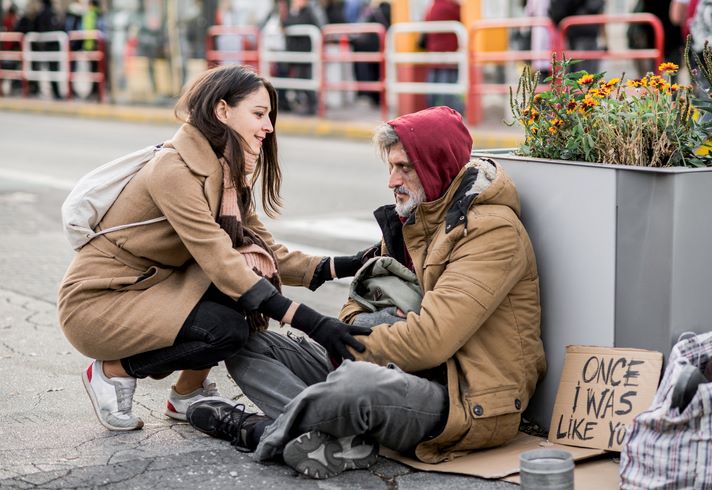The Beverly Hills City Council took a small step toward serving a portion of its local homeless population on Tuesday evening.
According to city staff, the City of Beverly Hills only contracts for five beds at the nearest People Assisting the Homeless (PATH) facility, with PATH telling the city that given the competition with the City and County of Los Angeles for homeless beds, five beds is the most they will see for the foreseeable future.
Enter Santa Monica-based Step Up on Second, which has been contracting with the city since 2015 “to provide a homeless outreach and permanent supportive housing placement program” according to a staff report. The report also states, “the City’s agreement with Step Up was increased in November 2022 and they currently provide five homeless outreach staff members seven days a week, in addition to placing individuals in shelter and transitional housing as available and as requested.”
Currently, Step Up on Second, or “Step Up,” operates 421 units of community-based permanent supportive housing across 12 developments in L.A. County. The proposal being forwarded Tuesday evening would provide 30 units of “scattered site” permanent supportive housing for the chronically homeless, and hotel stays for 20 non-chronically homeless individuals on a rotating basis for up to 10 years. Scattered site refers to the units being located in differing locations throughout the area.
The contract as proposed over a 10-year period would cost the City of Beverly Hills $14,177,026. City staff said they already have about 25 individuals identified who would benefit quickly from these services. However, according to Christopher Paulson, the city’s Homeless Services Administrator, there would be a 30 to 60-day outreach period that would need to take place to liaise with individuals and others to recruit them to sign on to accept the housing.
“This is an innovative program that will do a lot for our homeless population here,” said Paulson. “But I want to be clear: this will not single-handedly end homelessness in the City of Beverly Hills.”
Councilmember Lili Bosse said she hears from constituents who wonder if the unhoused in Beverly Hills can really be considered local residents and if not – why is it the city’s problem. She answered their question by saying that it’s because homelessness is happening within their city borders. “We are in a crisis; we’re not an island,” she said, adding, “The unhoused population doesn’t know borders.”
In addition, Paulson reminded the council of Federal case law that states that the homeless cannot be cited for any kind of crime for simply sleeping in public unless they are offered a legitimate housing source and refuse it. To this, Bosse said, “If we have somebody unhoused and we can show that we have provided the opportunity for a bed, then we can do something about it. Right now, we can’t.” She also said that the city’s competition with municipalities like Los Angeles for available beds is akin to a “race against the clock” to get their segment of unhoused people taken care of.
Councilmember Sharona Nazarian articulated the NIMBY paradox often rampant among Beverly Hills residents when she stated, “A lot of residents want to know why our city is considering spending so much money on the unhoused, yet they still want to have our unhoused individuals removed from the city.” She added that she appreciated Paulson’s explanation of case law so that residents can understand why significant money would need to be spent to offer the unhoused beds.
Nazarian did ask, though, that given the city won’t know where it is in 10 years, whether the 10-year contract could be made into five years, with a five-year option to extend it. Step Up on Second CEO Todd Lipka explained that while they’re open to five years, the 10-year timeless is in part due to the fact that the chronically homeless will continue to require housing retention due to a disability or some other impediment toward advancement.
But Nazarian then followed up with the classic NIMBY narrative that once the program is announced, unhoused persons from outside of Beverly Hills will flock to the city in the hope of landing one of the available beds. But Stephanie Harris, the city’s Director of Community Services, assured Nazarian that the beds would be filled by unhoused individuals who have been residing in the city and with whom the city and Step Up staff have already had several interactions. She also acknowledged, as did Paulson, that this program is not, nor does it pretend to, solve the city’s homeless crisis. She added that as they progress, they will have to take advantage of other state and regional solutions that may arise to house others.
Lipka assured the council that what’s being proposed is innovative, but not experimental. “This is an evidence-based practice,” he said. “This works.”
After more supportive comments for the staff and Step Up on Second from other council members, the proposed contract was adopted by a unanimous vote, 5-0.
Photo by Halfpoint
Stay informed. Sign up for The Westside Voice Newsletter
By clicking submit, you agree to share your email address with Westside Voice. We do not sell or share your information with anyone.








